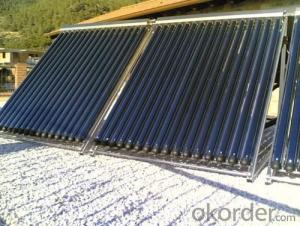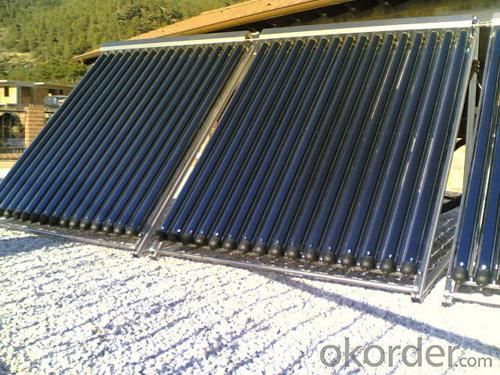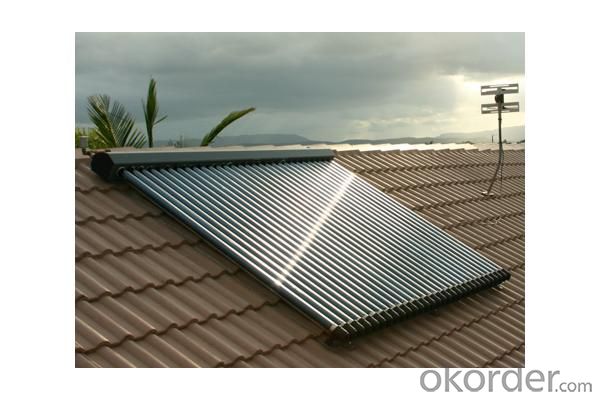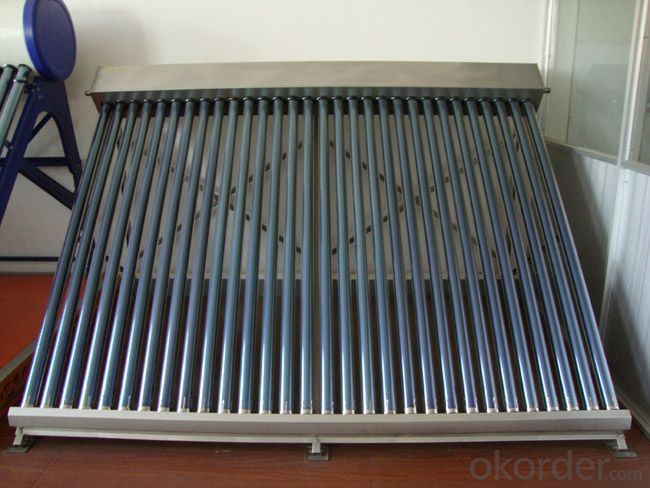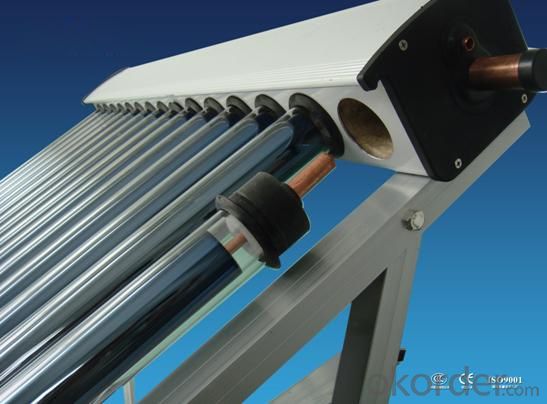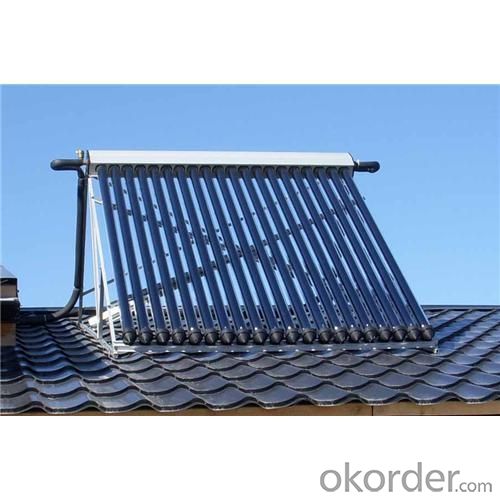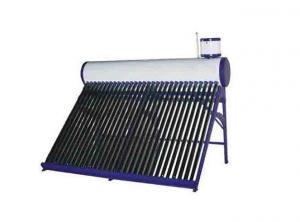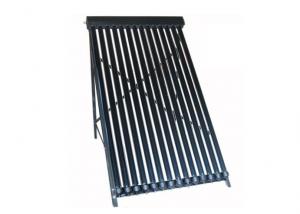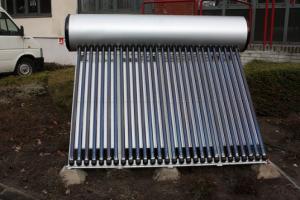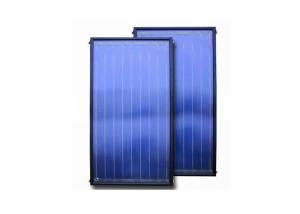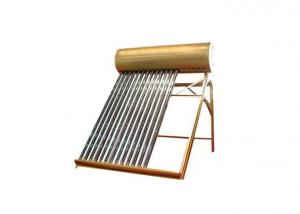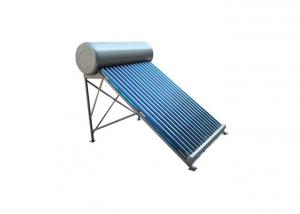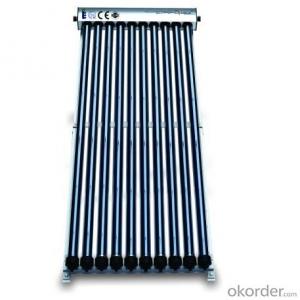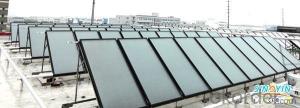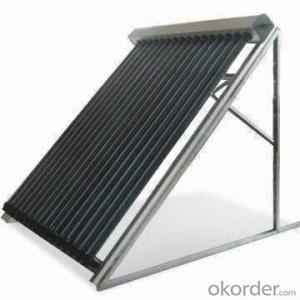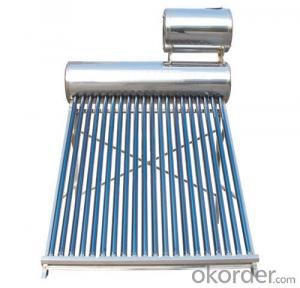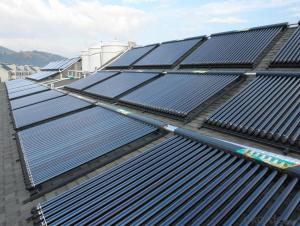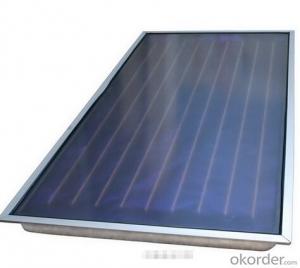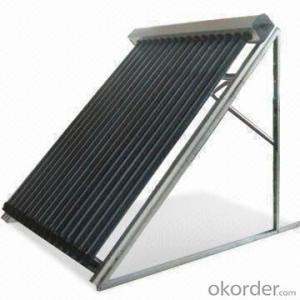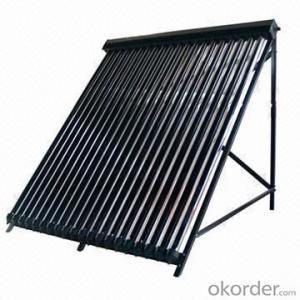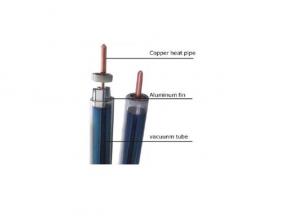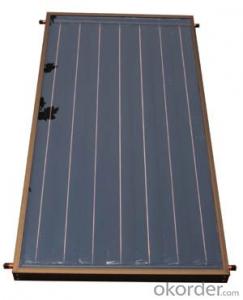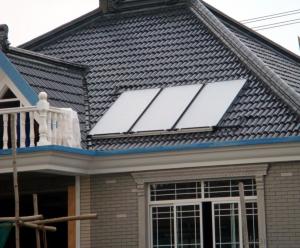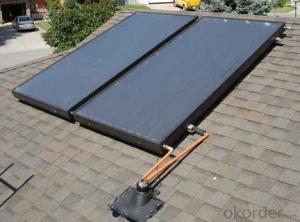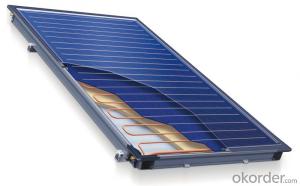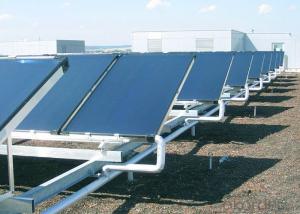10 Tubes Solar Pipes Solar Collectors High Efficiency Nptel
- Loading Port:
- China main port
- Payment Terms:
- TT OR LC
- Min Order Qty:
- 5 set
- Supply Capability:
- 10000 set/month
OKorder Service Pledge
OKorder Financial Service
You Might Also Like
Specification
manifold (inner) | red copper |
manifold (exterior) | aluminum alloy |
glass tube dimensions | 58mm * 1800mm |
daily efficiency | ≥55% |
heat preservation | 72 hours |
hail resistance | 25mm |
max pressure | 7 bar |
coating of vacuum tube | ALN/AIN-SS/CU |
heat pipe | anti-freezing > -35 degree |
certificate | Solar Keymark, EN12975,SRCC |
Serious Product
Models | L*W*H mm | Vacuum tube | Power output | Efficiency | Header mm | Frame | container loading 20FT/40HQ sets | Gross Weight kg |
SHC-8 | 1917*910*133 | 58*1800*8pcs | 939W | 0.668 | Φ35/1.0 | AL alloy | 185/445 | 27 |
SHC-10 | 1917*1130*133 | 58*1800*10pcs | 1189W | 159/385 | 33 | |||
SHC-12 | 1917*1350*133 | 58*1800*12pcs | 1440W | 149/358 | 40 | |||
SHC-15 | 1917*1680*133 | 58*1800*15pcs | 1815W | 120/290 | 49 | |||
SHC-18 | 1917*2010*133 | 58*1800*18pcs | 2191W | 100/242 | 59 | |||
SHC-20 | 1917*2230*133 | 58*1800*20pcs | 2442W | 87/210 | 66 | |||
SHC-22 | 1917*2450*133 | 58*1800*22pcs | 2692W | 83/202 | 72 | |||
SHC-24 | 1917*2670*133 | 58*1800*24pcs | 2943W | 77/188 | 79 |
Packaging & Delivery
Packaging Details: | Exporting Carton with big foaming protection |
Delivery Detail: | In 10-15 days |
Loading Quantity
Model | Tube | Tube Q.T.Y | Loading Q.T.Y/40HQ |
GSC15 | 58*1800mm | 15pcs | 315sets |
GSC18 | 58*1800mm | 18pcs | 265sets |
GSC20 | 58*1800mm | 20pcs | 248sets |
GSC22 | 58*1800mm | 22pcs | 225sets |
GSC25 | 58*1800mm | 25pcs | 200sets |
GSC30 | 58*1800mm | 30pcs | 168sets |
Details of solar collector:
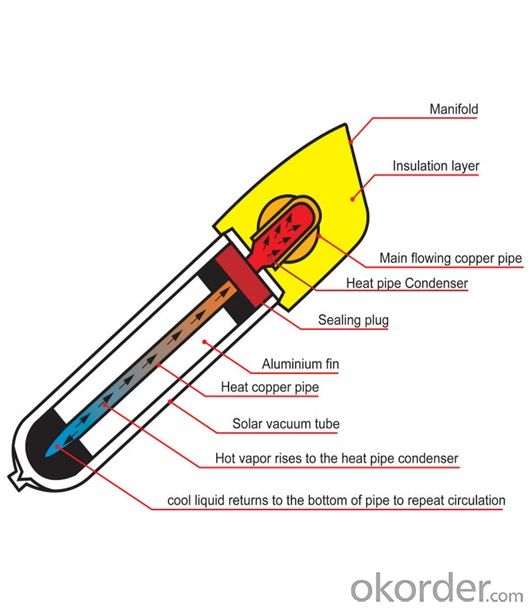
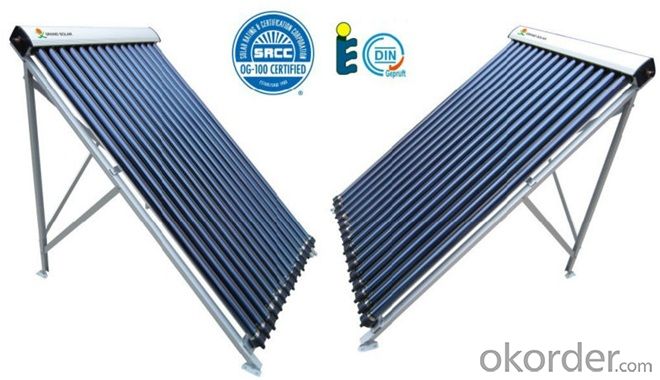
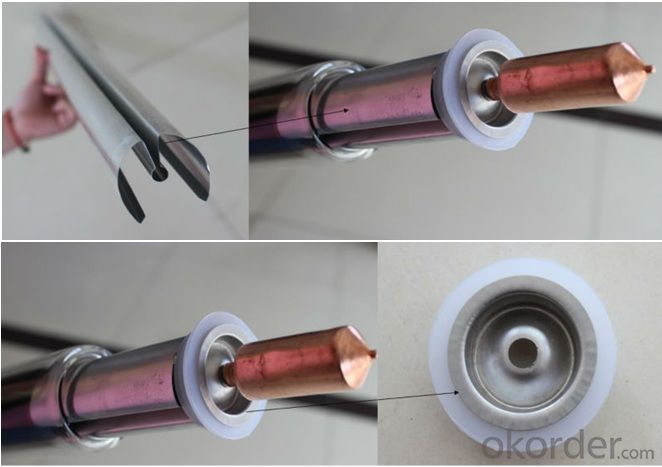
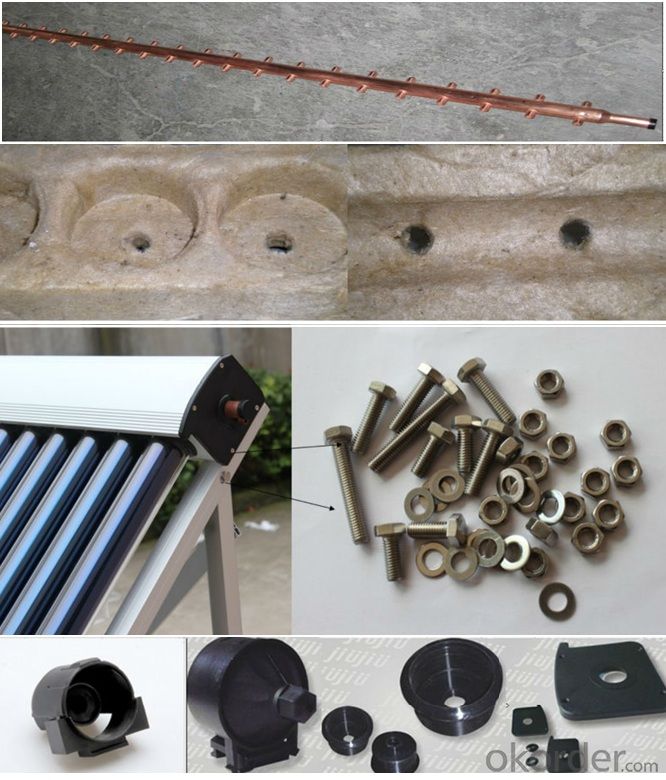
- Q: Can solar collectors be used for heating military installations?
- Yes, solar collectors can be used for heating military installations. Solar thermal systems can effectively capture sunlight and convert it into heat energy, which can then be used to provide heating for various purposes within military installations, such as heating water, buildings, or air. The use of solar collectors for heating not only reduces dependency on traditional energy sources but also offers a sustainable and environmentally friendly solution for meeting heating demands in military installations.
- Q: Can solar collectors be used for heating monasteries?
- Yes, solar collectors can indeed be used for heating monasteries. Solar collectors, such as solar thermal panels, can harness the sun's energy to heat water or air, which can then be used for space heating in monasteries. This renewable energy source can help reduce the reliance on fossil fuels and lower carbon emissions, making it a sustainable and cost-effective heating solution for monasteries.
- Q: Can solar collectors be used in combination with solar panels?
- Yes, solar collectors can be used in combination with solar panels. While solar panels convert sunlight into electricity, solar collectors are typically used to heat water or air. By utilizing both technologies, one can maximize the energy potential of solar power by generating electricity and also providing hot water or heated air for various purposes.
- Q: How do solar collectors compare to solar panels?
- Solar collectors and solar panels are two different technologies used to harness solar energy. While solar panels convert sunlight directly into electricity, solar collectors primarily focus on capturing the sun's heat energy for various purposes like water heating, space heating, or even electricity generation through concentrated solar power systems. So, the main difference lies in the type of energy they convert and the applications they serve. Both technologies have their own advantages and disadvantages, and the choice between solar collectors and solar panels depends on the specific requirements and goals of the user.
- Q: Can solar collectors be used in areas with limited sunlight?
- Yes, solar collectors can be used in areas with limited sunlight. While solar collectors are most efficient in areas with abundant sunlight, they can still generate electricity or heat in areas with limited sunlight. However, the overall energy output may be lower in such areas compared to regions with more sunlight. Additionally, the design and positioning of the solar collectors need to be optimized to make the most out of the available sunlight.
- Q: Can solar collectors be used for heating factories?
- Yes, solar collectors can be used for heating factories. Solar thermal systems, which use collectors to capture and convert sunlight into heat energy, can be integrated into the heating systems of factories. This renewable energy source can help reduce the reliance on fossil fuels and lower carbon emissions, making it an environmentally friendly option for heating large industrial spaces.
- Q: What is the effect of hail on solar collectors?
- Hail can have a detrimental effect on solar collectors. The impact of hailstones can cause physical damage to the surface of the collectors, resulting in cracks or breakage. This can lead to reduced efficiency or complete failure of the collectors. Additionally, if the hail is large enough, it can also damage the supporting structures or frames of the solar collectors. Therefore, hail poses a significant risk to the functionality and longevity of solar collectors.
- Q: What is the impact of temperature on solar collector efficiency?
- The impact of temperature on solar collector efficiency is generally negative. As temperature increases, the efficiency of solar collectors tends to decrease. This is due to the fact that higher temperatures can lead to increased thermal losses and reduced heat transfer efficiency within the system. Additionally, the performance of certain components, such as the solar cells or heat transfer fluids, may be adversely affected by excessive heat. However, it is important to note that the specific impact can vary depending on the type and design of the solar collector system.
- Q: Can solar collectors be used for heating outdoor spaces such as patios or terraces?
- Yes, solar collectors can be used for heating outdoor spaces such as patios or terraces. Solar collectors, such as solar thermal panels, can absorb sunlight and convert it into heat energy, which can be used to warm up outdoor spaces through various heating systems. This eco-friendly and sustainable solution can provide efficient heating for outdoor areas, allowing people to enjoy comfortable temperatures in their patios or terraces while minimizing energy consumption and reducing carbon emissions.
- Q: Can solar collectors be used to generate electricity in remote locations?
- Yes, solar collectors can be used to generate electricity in remote locations. Solar collectors, such as photovoltaic (PV) panels or concentrated solar power (CSP) systems, can convert sunlight into electricity using sustainable and renewable energy sources. These collectors can be set up in remote areas where there is abundant sunlight but limited access to the traditional power grid. In remote locations, solar collectors can be particularly advantageous since they do not require extensive infrastructure or fuel supply chains. They can function independently and generate electricity without the need for fossil fuels, reducing both costs and environmental impact. Additionally, solar collectors have no moving parts, making them reliable and low-maintenance. To generate electricity, PV panels capture sunlight and convert it directly into electricity using semiconductor materials. This electricity can be used immediately or stored in batteries for later use. On the other hand, CSP systems use mirrors or lenses to concentrate sunlight onto a receiver, which then converts the heat into electricity through turbines or engines. The electricity generated by solar collectors can meet various energy needs in remote locations, including powering homes, schools, hospitals, or even small businesses. It can also be used for water pumping, lighting, communications, and other essential functions. By harnessing solar energy in remote areas, communities can gain access to clean and sustainable power sources, improving their quality of life and promoting economic development. Overall, solar collectors are a viable and effective solution for generating electricity in remote locations, offering a sustainable and reliable alternative to traditional power sources.
Send your message to us
10 Tubes Solar Pipes Solar Collectors High Efficiency Nptel
- Loading Port:
- China main port
- Payment Terms:
- TT OR LC
- Min Order Qty:
- 5 set
- Supply Capability:
- 10000 set/month
OKorder Service Pledge
OKorder Financial Service
Similar products
Hot products
Hot Searches
